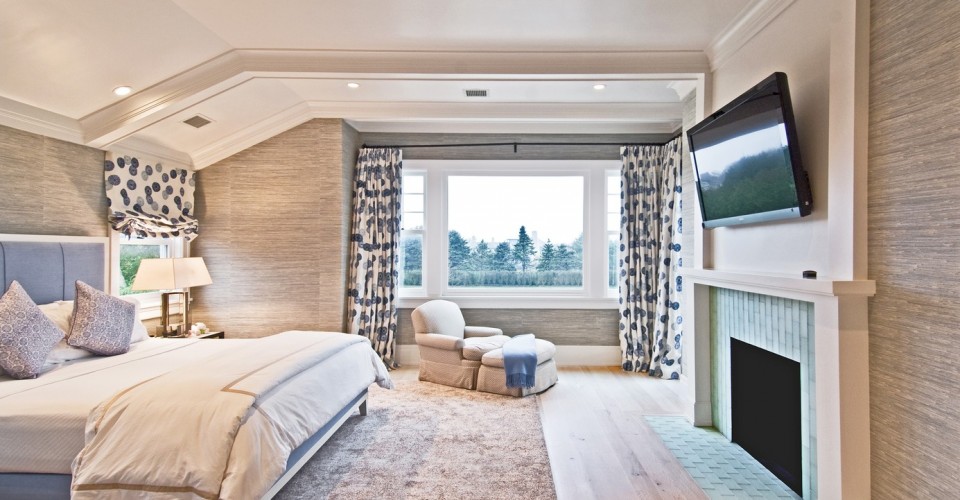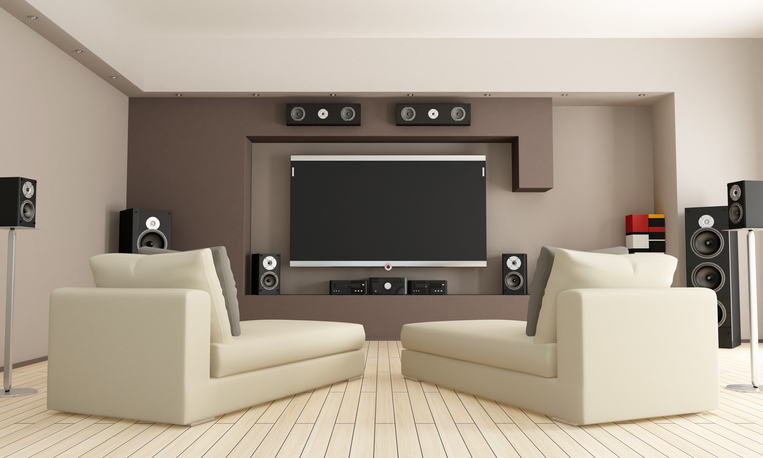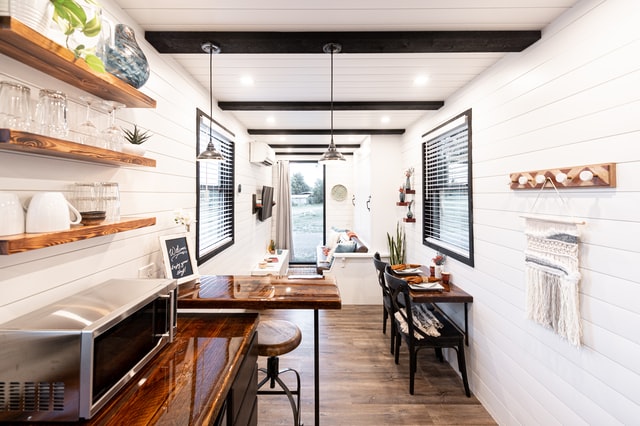The history of the bedroom and the bed itself provides an interesting peek into societies of the past. Just like people, our homes (including the bedroom) are continuously evolving. Where ancient nomadic people used to lie down on grasses and animal hides, the bedroom of the modern world reflects massive advancements in technology and comfort. Unlike communal societies of the past, today’s bedroom emphasizes privacy, even from our own family. It begs the question: what events or changes created bedroom we know today? What were early bedrooms and beds like for the people who slept in them? Let’s take a look at how beds and bedrooms have evolved over the centuries and discover what shaped the bedroom of today.
Earliest known beds
Archeologists studying the ancient people of Sibudu, South Africa, have found evidence of bedding made from sedge grass dating back 77,000 years ago. The aromatic leaves have a pleasant scent that also acts as a natural insecticide, repelling mosquitos and other insects. Using these tall grass-like plants for woven bed mats was so effective that it is still used by the local people today. Archeologist have discovered that the ancient South Africans were semi-nomadic and as they migrated, there is evidence that the sedge bedding was burned, possibly to clean the area and rid it of pests and organic materials.

Even today, people living along the uThongalthi River in South Africa collect sedge to make their sleeping mats. Courtesy of History.com.
In China, the idea of heating stones then resting upon them during the night may have taken place during the Neolithic period. Archeologists think that these beds, called huoqiang, may have been used as long as 7,200 years ago. A fire would be lit on top of a hard surface and the ashes cleared prior to resting upon them. Using heat to warm a stone platform evolved until eventually a flue and ventilation system was created so that a fire could be built underneath the stones. This new technology was called a kang, and is still in use in some parts of China today. The radiant heat created from these fires would have served multiple purposes within the home. Cooking, heating and other activities would have taken place upon the kang, and at night it could be used for warm and comfortable sleeping.
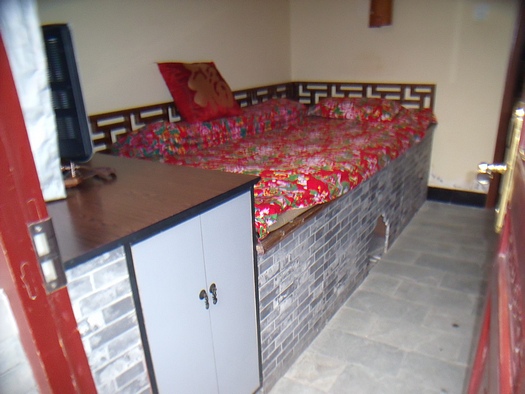
A modern Chinese kang or heated platform bed. Image found here.
Ancient societies
The ancient Egyptians used wood and fibers for many of their furniture pieces, including beds. Much of their wood came from neighboring societies, and were carved and gilded into ornate shapes and figures. Some of this furniture exists today, as it was buried in the tombs of pharos. An ancient bed might look familiar to modern eyes – it was a raised, rectangular structure with a perforated platform for ventilation. Claw feet and other decorative touches might indicate status of the sleeper. Curtains may have also been hung around the pharaoh as he slept and there may have been carved headrests or stuffed pillows wrapped in linen. The ancient Egyptians placed a board across the foot the platform to prevent the sleeper from falling off the bed. The head would have rested at the open end, and may have been elevated either above or below the feet.
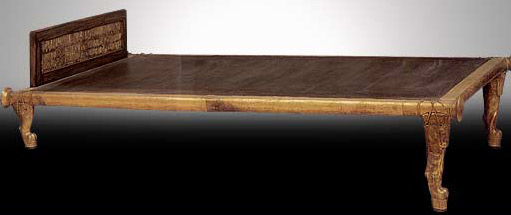
Ancient Egyptian bed. The claw foot faces in the direction of the sleeper’s head, so the head rests at the open end of the bed.
The Ancient Romans were famous for their use of beds in many aspects of life, and beds weren’t restricted to the bedroom. The chamber bed, used for sleeping, was rather functional and may have been topped with a straw or feather-filled sack. Some households had a lectus genialis, a marriage bed that was essentially symbolic and placed near the central courtyard. There were beds for eating (while lying on their left sides) and beds for studying. And finally there were beds for the dead, called lectus funebris, where the dead were carried to the funeral pyre.
Each culture across the globe has a different story to tell about the evolution of the bed and bedroom. Some native tribes may live in homes that have remained relatively unchanged for thousands of years. And others, like the bustling cities in Asia, are undergoing significant changes in housing as we speak. So much of how a person lives within their home stems from changes in architecture as well as developments in furnishings – and all of this is greatly influenced by societal and economic developments, as well as changes in available materials.
European history of the bed and bedroom
Early Americans turned to countries like England and France for inspirations in architecture, furniture and textiles. Even today, designs from Europe heavily influence many of our home design and décor decisions. So the story of our typical American bedroom today began long ago across the Atlantic. To get specific details on how the bedroom evolved in Europe, let’s start in Medieval England, where detailed accounts of how people lived within their homes were accurately kept.
Medieval beds and bedrooms (5th – 15th centuries)
In the communal societies of the Middle Ages, the concept of privacy simply didn’t exist. There was strength in numbers and to keep the community strong, people within a community centered their life and livelihood in and around the great hall. Everything from food preparation, cooking, business, trade, marriage, birth, death and sleeping would have taken place within the safety of the great hall. When darkness fell, everyone would lie down on the rush flooring and sleep around the embers of the central fireplace. Rush, a type of grass, was softer than the stone flooring and could easily absorb spills and messes. “Hitting the hay” involved stuffing hay into a hemp sack, called a “tick” (which is where we get the modern word “ticking” to describe the traditional striped material used to cover a mattress). Some people may have used stumps of wood to rest their heads. The central indoor fire would be covered at night to reduce accidental sparks from igniting the hay. In fact, word “curfew” derives from the French words covrefeu, which literally means “it covers the fire.”
The lord and lady would have lived more or less above the masses in the upper floor, which was reserved for their family, close friends, and servants. Although this space offered a sense of privacy, it was by no means devoid of people. This chamber would have been the perfect place for conducting important matters like business, trade and marriage. The chamber, or bedchamber, was like a modern VIP lounge, where only the privileged would have been invited to stay and sleep. It was important to note that this bedchamber helped foster a sense of hierarchy and competition among the community. So the bedroom or bedchamber was seen as a place of great importance in the community – being allowed inside to talk business was an enormous privilege, a concept that would thrive in the periods following.

An example of a mid-14th century great hall in England. Image found here.
Beds were extremely expensive to craft and outfit. The craftsmen employed to create the four poster bed, the multiple layers of hay and down feathers, as well as the textiles, meant that an excessive amount of money was spent strictly on the bed. The wealthy noblemen would take them with them when traveling, and a bed would be recorded in a person’s last will and testament to be passed down to family members. During this period of time, the king and queen would have their own bedchambers, and vast amounts of money were spent on the furniture and furnishings that lived within the bedchambers. This period of time in England was one of war and frequent changing of the crown. Kings were constantly on the move, fighting battles and winning favors, and their beds and bed furnishings moved with them. Servants were employed strictly to manage the important bedchambers. The Lord Chamberlain was the head servant in charge of this critical room, a post so privileged that it eventually became associated with the person in charge of royal affairs (a post that is still held in many royal households in Europe today).
Tudor beds and bedrooms of 16th Century (1485-1603)
For the middling or middle class, times were changing. Like the noblemen they emulated, the middle class began to live in their own homes with their own upper floors. Bedrooms were sparsely furnished but generally contained a bed with a trundle and a chest for clothes. Like the noblemen, the bedchamber served as almost a public stage for all critical aspects of life. Births, weddings, business and socializing all took place within the bedchambers. Death also occurred in the bedroom, creating the final act in the circle of life. And for many, the acts of birth and death occurred in the bedroom simultaneously. 1 in 5 women died in childbirth and it was not uncommon for children to not live past their first few years.

15th century English bed with trundle bed. The curtains gave the only sense of privacy in the home. Image found here.
For the Tudor royals, like King Henry VIII, the bedroom was not only a place of importance for the entourage, it was becoming increasingly important for the royal lineage itself. For Tudor kings, the heir to the throne was so incredibly valuable to the success of the crown that it could be said the success of the king depended upon his success in the bedroom. For members of the court, great attention was directed to life within the series of bedchambers. It was considered a position of great importance to be able to hold court inside the chambers of the king and queen. Queens would have held their own court inside their own bedrooms, surrounding themselves with trusted servants and loyalists. Servants who were selected to work within the bedchamber held great status, as they were not only physically close to the king or queen but would stand witness to the inner workings of life at court.
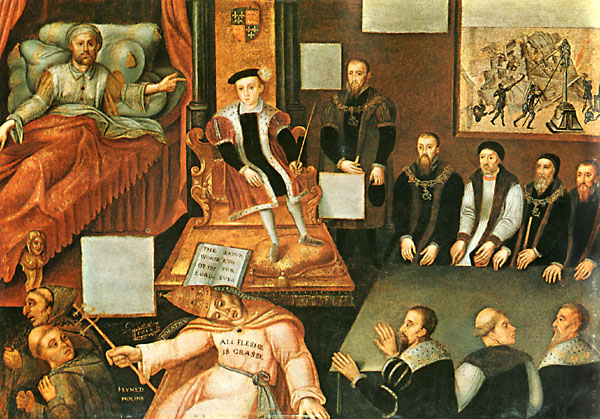
A painting showing King Henry VIII on his deathbed and his successor, King Edward VI. Painter unknown. Image found here.
Beds for the middle class were extremely valuable, as much as one third of a family’s wealth might be tied up in the bed itself. For this reason, beds were passed down from generation to generation. Privacy was still not a concept in the Tudor period. With the exception of the bed curtains, which would be drawn at night, beds were still rather public. The trundle bed might be used for children or servants and the bedroom itself was used for all manner of life. Tudor life was fraught with rituals and superstitions. Night was believed to be filled with terror. Nighttime rituals might include the practical, like sprinkling herbs over the straw mattress to combat bed bugs or tightening the bed strings to make a more supportive platform (“sleep tight, don’t let the bed bugs bite!”) or placing heated rocks under the covers for warmth.
Stuart beds and bedrooms of the 17th century (1603-1688)
Beds and bedrooms continued to hold places of prominence for both the middle class as well as the ruling class. In larger homes, bedchambers were often a series of rooms including a separate bedroom for the husband and wife along with separate closets. These closets weren’t dressing rooms like what we see in our homes today. Servants would help the lord or lady dress in the public areas of the bedchamber. The closet was a smaller room reserved strictly for the man or woman of the house – entirely private and reserved for prayer and solitude. It’s important to remember that no one had privacy anywhere. Bedchambers were still rather public, filled with family, servants and important friends and business associates. Even trips to the bathroom would be public as the many layers of clothing required the presence of servants. So having a closet that was entirely personal was considered essential for a person of privilege to have any alone time. Incidentally, the servant in charge of attending the king while going to the bathroom was given the title, Groom of the Stool (stul being a Norse word for “chair”). Although difficult for our modern eyes to see the importance of this position, the Groom of the Stool was incredibly influential and would often act in a secretarial or administrative capacity. Being closest to the king in the most intimate moments made this person highly respected. Servants within the privy chambers of the king held enviable positions and were revered.
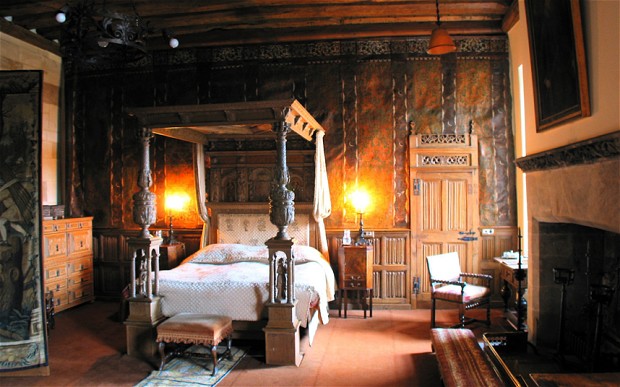
This bed is believed to be the oldest in England and was built around 1608. It has been residing in the Berkeley Castle for over 400 years. Image found here.
At Hampton Court, the residence of William and Mary, the intricate series of bedchambers acted like a filter for those seeking the ear of the king and queen. There were no hallways but rather a series of doors that connected one room to the next. If you needed face time with the king, you would need to pass through a series of rooms, essentially rising in rank from room-to-room. Beds were great symbols of status and wealth. In fact, the beds within these important bedchambers were so elaborate, with high drapery and gilded décor, that the beds themselves became ceremonial, like a mock-bedroom. The King and Queen would publically dress (and undress) within these symbolic spaces, often inviting an audience. Servants would be chosen to dress the king or queen with specific articles of clothing, one might be in charge of the under garments while another might be in charge of shoes. It was considered a great honor to witness the king or queen dressing, and reflected the power of the royal family. Where the king and queen actually slept was in a different bedroom, which was a bit more private. Queen Anne (1665-1714), the last of the Stuarts, commissioned a grand bed to serve as her deathbed, not an uncommon practice at the time. Her death marked the beginning of the Georgian period, you can see the end of one style and the beginning of another starting to take hold. The sheer extravagance of this bed shows just how important the bed was, symbolically speaking, for the royal family. Her bed is comprised of at least 5 separate mattresses, each more luxurious than the next. Delicate embroidery covers the cover as well as the drapery.
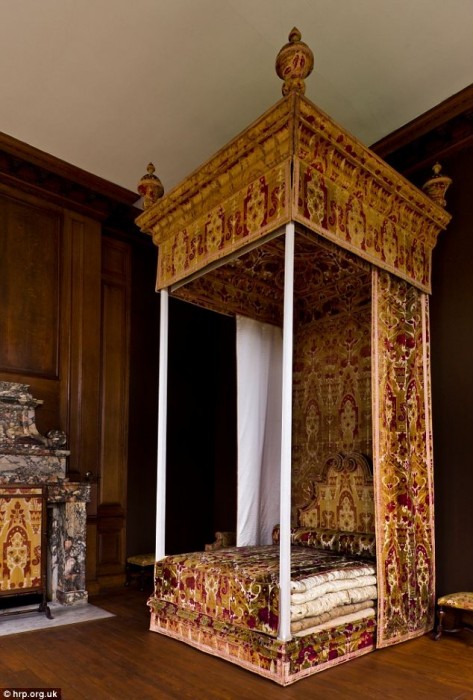
The bed designed by Queen Anne (1665-1714) of England for her death. Notice the multiple mattresses. Image found here.
Georgian and Federalists beds and bedrooms of the 18th century
The homes in the English Georgian period underwent significant changes compared with their predecessors. One of the biggest changes was that homes were built with internal staircases and hallways, which meant that servants and staff no longer had to walk through one room in order to get to another. Bedrooms were becoming private spaces. Servants no longer slept with the master or mistress but had their own quarters upstairs or downstairs. Bells were outfitted into the bedroom so that a servant could be summoned and clocks came into fashion inside the bedroom. The Georgian period represented a monetary change to the English middle class, with greater trade creating wealth and access to different materials and worldly goods. As the middle classes were rising, members of the royal family were slowly losing hold of their supreme power. Real power transferred to Parliament, and as power in the private chambers dwindled, the opulence and drama of the bedroom also began to fade.

A restored Federalist bedroom in Massachusetts. This house was believed to be built in 1792. Image found here.
In America, the Georgian style influenced the colonists, which blended the strict architecture with a neo-Palladian style to create a Federalist style. Unlike the Baroque, the Georgian and Federalist style was much less decorative, with a focus on mathematical purity and symmetry. Even though America was creating a democracy, and officially separating from England, the fact remains that the wealthy still viewed the bedroom as a place of great importance. Thomas Jefferson’s private rooms within Monticello feature an alcove bed that connected his bedroom or dressing room to his cabinet or office. His private chambers were placed prominently near the main rooms of his home.
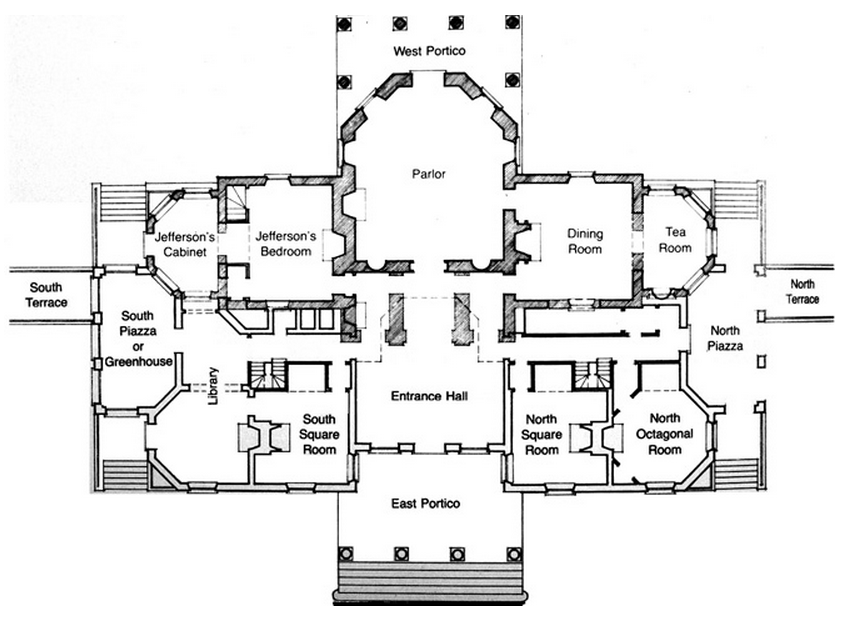
The architectural layout of Monticello, residence of Thomas Jefferson, constructed in 1769. Notice his bedroom and cabinet were prominently placed within the home. Image found here.
Victorian beds and bedrooms in the 19th century
The late 19th century in America was rapidly changing. Nearly 40% of townships lost their population due to migration between 1880 and 1890. Outside the world was becoming faster and more polluted. Mass transit and skyscrapers, along with poor sanitary conditions and noise, were transforming cities. But for many major cities, the Victorian influences were strong. Victorian beds of the middle and upper classes were very labor intensive to make. Metal platforms supported as many as 8 or 10 layers of quilts, blankets, sheets, feather mattresses, horsehair mattresses, and straw mattresses. Victorian households emphasized proper etiquette, health, and cleanliness and the daily chore of airing out the layers of the bed usually fell to the household servant.
Homes were being built with private bedrooms for the master and mistress of the house, as well as separate bedrooms for the children. Even the household staff had separate bedrooms for the male and female staff, which reflected the Victorian attitude of the day. Decorative touches became more commonplace within the bedrooms. The Industrial Revolution created new technologies and made home goods cheaper for the masses. There was a greater emphasis on interior design and decorating as well as colors and textures. Window shades and blinds became popular in the bedroom. It’s important to note that many of the tasks we reserve for the bathroom were still being performed inside the bedroom. It was common to have a washbasin, mirror and sometimes a commode located in the bedroom or bedchamber. Indoor lavatories wouldn’t really be commonplace in America until the early 1900’s.
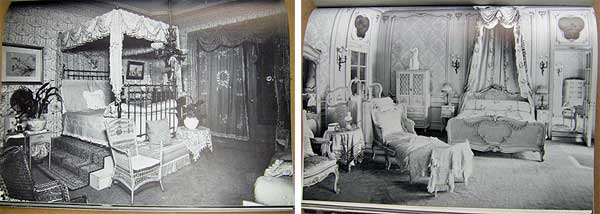
These images depict the opulent bedroom in the home of Mrs. Hughes (1899), and bedroom in the C.A. Mackay home, Roslyn, L.I. (1905). Image courtesy of My Auction Finds.
Greater emphasis on privacy was practiced, and was greatly influenced by the very private Queen Victoria herself. Incidentally, the shift of power out of the queen’s bedroom happened in a singular scandalous event known as the bedchamber crisis of 1839. It was common at that time for the Prime Minister to appoint members of the household staff, presumably with his supporters. Sir Robert Peel, a Tory, insisted upon firing Queen Victoria’s ladies of the bedchamber, on the account that they were wives of Whigs. Victoria refused but was coerced into agreeing upon this arrangement. Because of this scandal, Queen Victoria insisted upon absolute privacy in her bedchamber, no longer relied upon her ladies for companionship, and the door to the royal private chambers closed for good.
In the late 19th and early 20th centuries, life in the city was terrible for the poor. New York City tenements were famous for overcrowding and unsafe conditions, with too many people sharing the same facilities. Families would often share a singular room or bedroom and all manner of life would take place within this space.
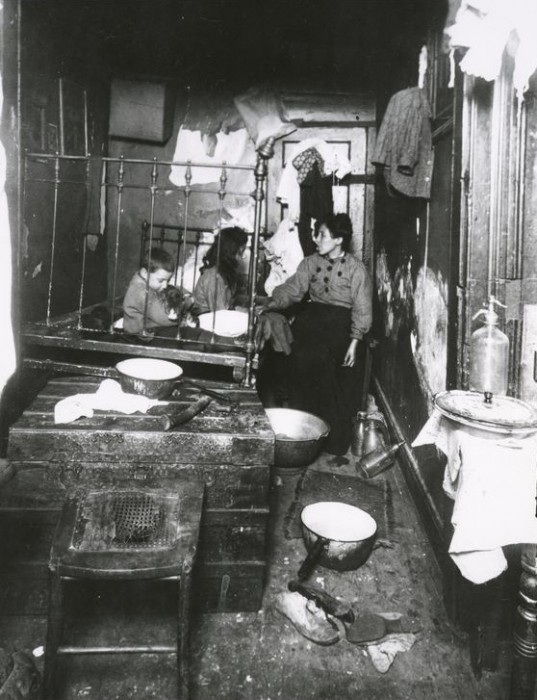
A photo capturing tenement life in the late 19th century in New York. The bedroom, kitchen and living room are all in one small space. Image courtesy of EphemeralNY.
Bedrooms and beds of the early 20th century
The Industrial Revolution had brought forth many technological advancements into the home, and so did the war. Coiled metal springs were made more widely available and created greater mattress comfort. Electricity was becoming more commonplace, allowing people greater time to relax, read or pursue hobbies well after dark. And the glitz and the glamour of moving pictures were beginning to influence the home. Affordable rayon allowed women to emulate Hollywood boudoirs, and steamy novels became best sellers. Women’s rights, a focus on glamour, and the 1920’s economic roar created a desire for luxurious bedroom design. Bathrooms moved out of the bedchamber, allowing the bedroom to become pretty and glamorous.
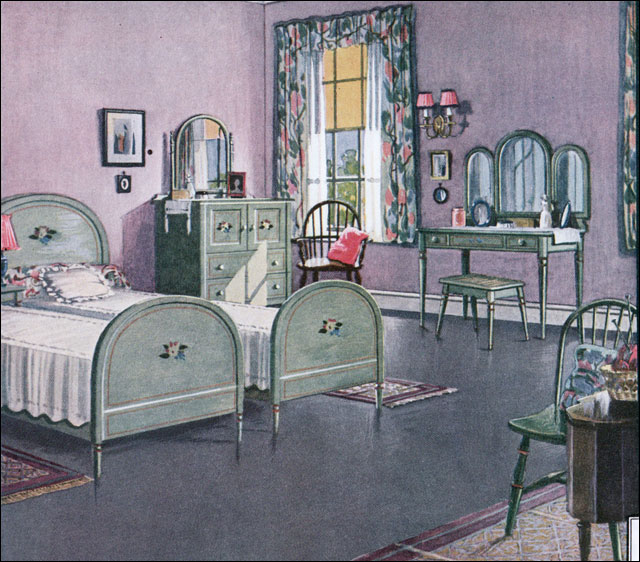
An illustration of a 1924 lavender bedroom. Catalogs at the time encouraged colorful rooms as well as DIY decorating. Image from Antique Home Style.
Post WWII America witnessed a housing boom as soldiers returned from war and got married. No longer were young married couples living with their parents; they desired their own homes and created a demand for home furnishings. The economic rise of the 1950’s allowed couples to afford luxury in their home and emphasis was placed on domestic life. We see this in the vast amounts of suburban home developments that started to pop up across the West.
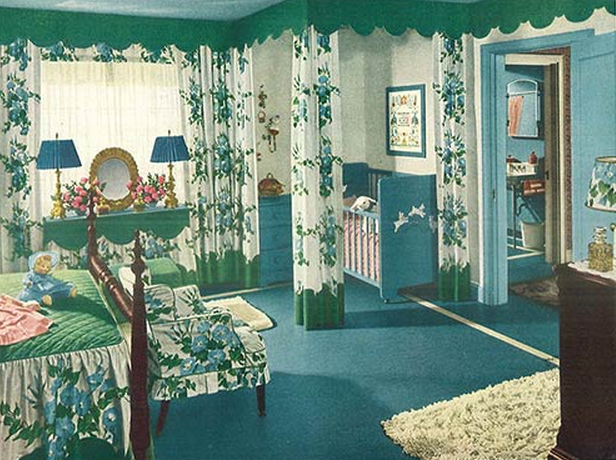
An ideal bedroom from 1944. Notice the baby crib in the corner with curtains that could be used to hide that area away from sight. Image from Retro Renovation.
In the 1960’s a new change to the bed was introduced to America via England. It was a Scandinavian creation called the duvet and was brought to England by famed home goods retailer, Terrance Conrad. His store, Habitat, became an evangelist of this Scandinavian design, which allowed the woman (or man) of the house to make the bed in a short amount of time. Couples were literally freed from the layers of formal bedding, and the duvet characterized the sexual revolution that was underfoot. The dominating trend in the 1960’s and 1970’s was comfort and relaxation, as well as individuality in the bedroom.
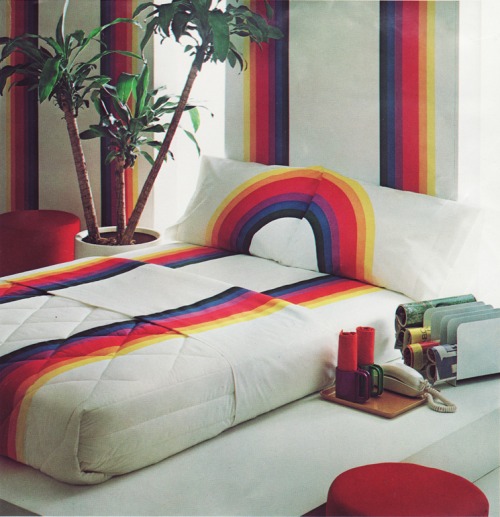
Freedom in the bedroom went beyond interior design in the 1970’s. Image from Super Seventies.
The bedroom of today
New homes being constructed today offer massive luxuries for the bedroom and bed furnishings. Master suites complete with sitting areas, TVs, fireplaces, walk-in closets and massive bathrooms are extravagant retreats from the stress of life. Some master suites even include comforts like built-in coffee makers, pre-programmed lighting and radiant heat flooring. Children’s bedrooms are often constructed with their own private bathrooms, and are designed larger than ever to accommodate places for study as well as places for play. Parents happily spend money customizing the baby’s nursery and are accustomed to regularly changing the interior design of the room as the child grows.
Luxury bed linens are available everywhere, with an emphasis on eco-friendly blends like bamboo or hemp. Developments from NASA even entered the bedroom with the invention of memory foam. Funnily enough, horsehair mattresses are making a comeback with the brand Hastens offering luxury mattresses that retail for thousands of dollars. Our bedrooms are filled with soft fabrics that help dampen noises, and we can install blackout shades to create compete darkness. All in all, the bedroom of today can be viewed as one of the most agreeable, and indulgent of all the rooms in our home.
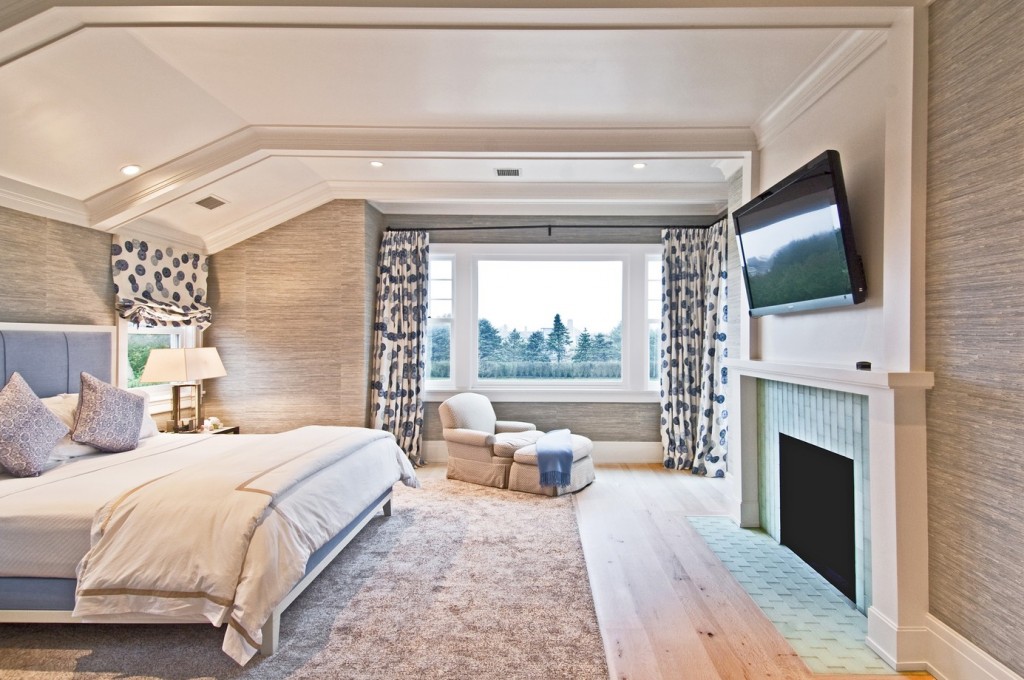
A contemporary master bedroom illustrates emphasis on luxury, size and comfort in the bedroom. Image from Benco Construction.
In a way, today’s bedroom offers the best of all the bedroom trends from centuries past: our bedrooms are private, quiet retreats, designed for ultimate comfort and relaxation, and filled with technology that focuses on wellness. Bedrooms are also getting bigger, and filled with opulent furnishings and décor that reflect the wealth and status of the homeowner. Of course, our bedrooms don’t all look the same. One of the best trends in bedroom design is the fact that homeowners choose individuality inside the home.
Tell us, what is your favorite trend from the past, and what would you like to see in the future?
Click here to read about the history of the kitchen.
